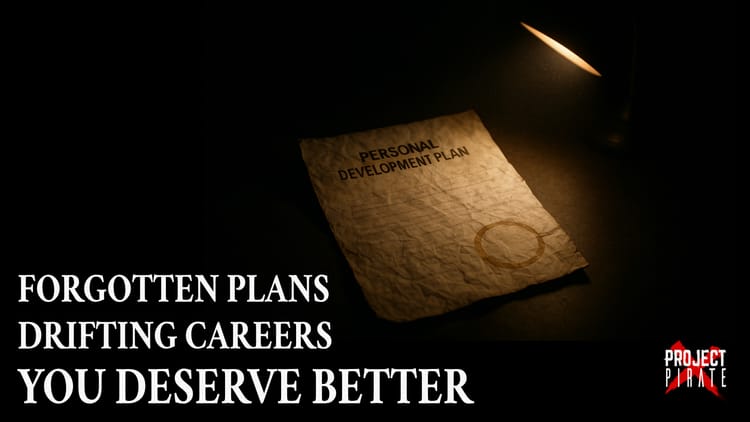Six Impossible Things Before Breakfast: The Leader's Guide to Revolutionary Thinking

Why, sometimes I've believed as many as six impossible things before breakfast." - Lewis Carroll, Through the Looking Glass
In the midst of a conversation between Alice and the White Queen, Carroll penned what might be the most profound piece of advice ever given to leaders and transformation professionals. While Alice protests that "one can't believe impossible things," the Queen responds with practiced wisdom: "I daresay you haven't had much practice."
Practice believing the impossible? In a world of risk registers, probability matrices and carefully calculated certainties, this sounds like career suicide. Yet some of history's most successful transformations began with someone believing what everyone else knew was impossible.
The Tyranny of the Possible
Modern leadership has become obsessed with the possible. We conduct feasibility studies, build comprehensive risk assessments and create elaborate governance frameworks designed to eliminate uncertainty. We've become so skilled at managing the probable that we've forgotten how to navigate the impossible.
Yet beneath the surface lies a deeper reality: every breakthrough that matters began as an impossible thing. 🌖🚀
Consider the leader in 1961 who was asked to believe that humans could land on the moon within a decade. Or the Computer Scientist in 1989 who envisioned every computer in the world connected through something called "the internet." These weren't just ambitious goals... they were definitionally impossible based on existing capabilities and understanding.
Yet believing in these impossibilities didn't make these leaders delusional. It made them pioneers.
The White Queen's Practice
Carroll's White Queen didn't just occasionally entertain wild ideas; she practiced believing impossible things daily, like a mental exercise. For half an hour each day, she deliberately expanded the boundaries of what she considered possible.
What if leaders adopted this practice? What if we spent time each morning not just reviewing our task lists, risk registers and milestones, but deliberately imagining outcomes that our current frameworks say can't happen?
This isn't about abandoning rigorous planning or embracing wishful thinking. It's about exercising our imaginative muscles so that when genuinely transformational opportunities appear, we're mentally prepared to recognise and pursue them.
Six Categories of Impossible Things for Leaders
1. Impossible Timelines
Traditional planning says complex transformations take years. But what if they didn't? What if the right conditions, resources and approach could collapse timelines that everyone assumes are fixed? Sometimes believing in impossible deadlines reveals entirely new approaches to work sequencing and resource deployment.
2. Impossible Stakeholder Alignment
Every seasoned leader knows that getting complete stakeholder alignment is impossible; there are always competing priorities, hidden agendas and conflicting interests. But what if perfect alignment were achievable? What would have to be true? Sometimes believing this impossibility reveals communication strategies and shared value propositions that seemed unreachable.
3. Impossible Resource Constraints
Budget cuts, staff reductions, vendor limitations - these feel like immutable constraints. But what if they weren't? What if infinite resources were available? This thought experiment often reveals creative solutions that work within actual constraints by fundamentally reimagining the problem.
4. Impossible Technical Solutions
Legacy systems can't talk to modern platforms. Data silos can't be integrated. Regulatory compliance makes agility impossible. These technical "impossibilities" often hide assumptions about how work must be done rather than reflecting actual limitations.
5. Impossible Cultural Change
Organisational culture changes slowly, if at all. People resist new ways of working. Change fatigue is inevitable. But what if cultural transformation could happen rapidly and enthusiastically? Believing this impossibility sometimes reveals change strategies that work precisely because they abandon conventional change management wisdom.
6. Impossible Success Metrics
Projects succeed when they deliver on time, on budget and to specification. But what if that definition of success is impossibly narrow? What if projects could succeed by failing spectacularly in service of learning something more valuable? Sometimes impossible success metrics reveal outcomes worth pursuing that traditional frameworks can't even see.
The Practice of Revolutionary Thinking
So how does a practical leader begin believing impossible things without losing credibility or effectiveness?
Start Small and Private: Begin your "impossible thinking" practice in private reflection, not in stakeholder meetings. Use it as a mental exercise to expand your solution space before applying practical constraints.
Time-Box the Impossible: Dedicate specific time to impossible thinking... Carroll's White Queen used half an hour daily. During this time, deliberately suspend your practical judgement and explore ideas that feel unrealistic.
Ask "What Would Have to Be True?": When you encounter an impossible idea that intrigues you, don't dismiss it immediately. Instead, ask what conditions would need to exist for it to become possible. Sometimes these conditions are more achievable than they initially appear.
Study Historical Impossibilities: Research projects that were once considered impossible but later succeeded. What beliefs and assumptions did those leaders have to suspend? What can you learn from their approach to the impossible?
Build Impossible Scenarios: Create detailed scenarios where your impossible ideas succeed. Work backwards from these outcomes to identify the stepping stones that might lead there. Often, the first few steps are entirely possible.
Share Impossible Ideas Strategically: Once you've developed impossible ideas through private practice, share them selectively with trusted colleagues who appreciate creative thinking. Frame them as thought experiments rather than proposals.
The Three-Question Framework: Author Michael Bungay Stanier offers a powerful method for expanding your thinking beyond conventional solutions. When facing any challenge, deliberately explore three approaches: What's the easiest thing to do? What's the brave thing to do? And what's the most outlandish, seemingly impossible thing to do? The purpose isn't to implement the outrageous ideas directly, but to stretch your mental boundaries and reveal creative possibilities that conventional thinking would never uncover.
The Transformation Imperative
In our current era of unprecedented change, the possible isn't enough. Digital transformation, artificial intelligence, climate change and global connectivity are reshaping everything we thought we knew about how work gets done. The leaders who will thrive are those who can navigate not just complexity and uncertainty, but impossibility itself.
This doesn't mean abandoning rigorous leadership practices. It means expanding them to include the capacity for revolutionary thinking. The best leaders will be those who can simultaneously manage the to-do list, risk registers and believe in impossible outcomes, who can create detailed strategic plans while maintaining space for solutions that don't fit any existing framework.
The Morning Practice
Tomorrow morning, before you check your emails or review your dashboards, spend fifteen minutes believing impossible things about your current challenges. Not planning them, not analysing them, just believing them.
Believe that your most difficult stakeholder will become your strongest advocate. Believe that your technical constraints will reveal elegant solutions. Believe that your impossible deadline will unlock revolutionary approaches to delivery.
Don't worry about how these things could happen. Just practice believing they could.
You might be surprised by what becomes possible when you've practiced believing in the impossible.
The Captain's Log
The most successful Pirate Captains weren't those who only sailed familiar waters; they were those who believed in treasures beyond the edges of known maps. They combined practical seamanship with the capacity to imagine what others couldn't.
In the modern seas of leadership, your ability to believe impossible things before breakfast might be the difference between managing incremental improvements and leading transformational breakthroughs.
After all, someone has to believe in tomorrow's possibilities before they can become today's realities. Why shouldn't it be you? 🔮
As Alice discovered in her adventures through the looking glass, sometimes the most practical thing you can do is believe in something impossible. The White Queen understood what many modern leaders have forgotten: impossible things aren't obstacles to success... they're often the only path to it!
What impossible thing will you believe in before breakfast tomorrow?
X Marks the Spot: The greatest treasures aren't found on existing maps; they're discovered by those bold enough to believe in what others can't yet see. 🧭





